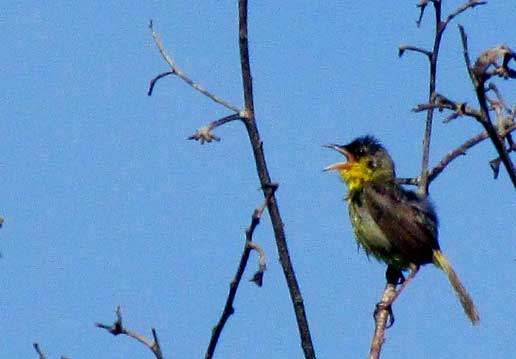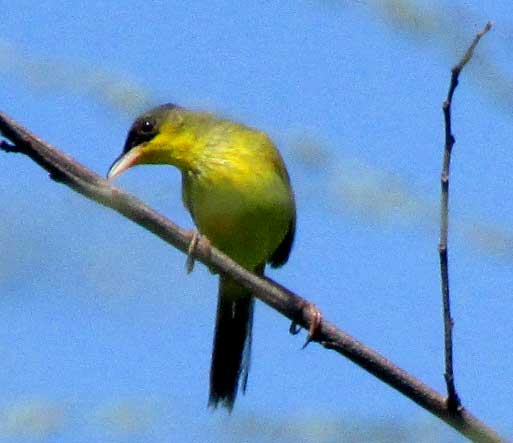Excerpts from Jim Conrad's
Naturalist Newsletter
from the September 6, 2015 Newsletter issued from Yuxunah, 20kms southwest of Chichén Intzá, Yucatán, MÉXICO
GRAY-CROWNED YELLOWTHROAT
Out among the weedy, abandoned cornfields all around town another common "weed bird" is the one shown below singing his heart out:

At first glance I wasn't sure what I was seeing, for the bird's feathers are in such disarray. Surely he'd just bathed, or maybe he was sick, despite his lusty calling, which was a rich warble similar to that of some buntings -- which is interesting because these weedy fields are prime bunting habitat. Is there something about a wide-open, weedy field that makes a bunting-type song so advantageous that a warbler species' song would evolve toward it?
Anyway, with that slender warbler beak, the yellow throat and blackish face and crown, it could only be the commonly seen Gray-crowned Yellowthroat, CHAMAETHLYPIS POLIOCEPHALA. In the old days the species was placed in the genus Geothlypis along with the North's Yellowthroat.
Below, you can see what a more composed Gray-crowned Yellowthroat looks like:

You might notice that this bird's beak -- distinctively pinkish-white below but with a black upper mandible -- is heavier than the Yellowthroats Northern birders are so familiar with. That's one reason the species was exiled from Geothlypis.
Gray-crowned Yellowthroats are distinctive species of weedy fields and pastures all through Mexico's tropical lowlands and all the way south through Central America into western Panama.